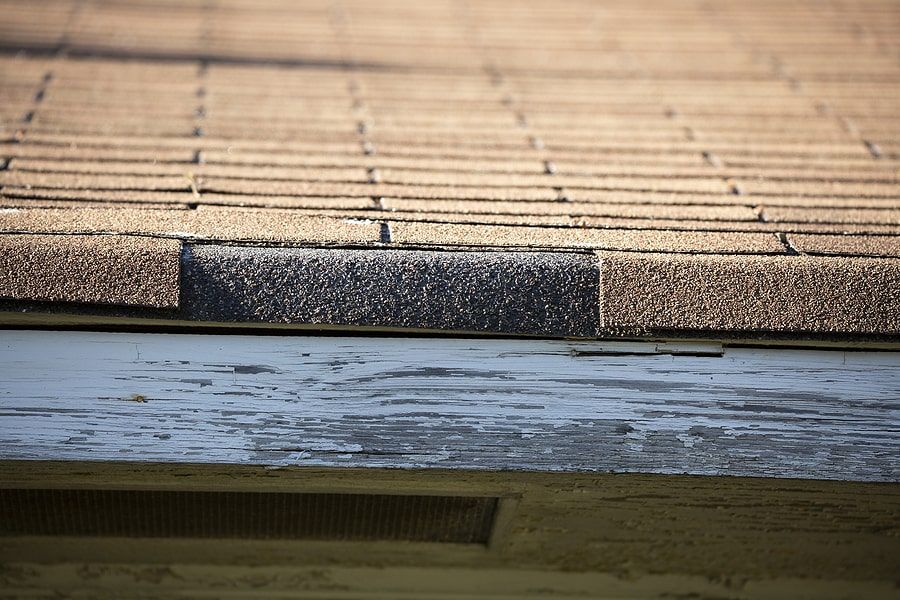Learn if your roof will start leaking, what to watch out for afterward and how to repair roof shingles that have been blown off as a result of a storm.

Will my roof leak if a shingle is missing?
Part of a Shingle: If a lip or corner of a shingle is missing, this is likely only an issue if the seam underneath it is exposed. Any exposure to a seam may result in leaks after it seeps into the felt layer.
A Whole Shingle: If your shingles were designed in a three-tab style, basically you have a one-in-three chance that the missing shingle was sitting directly above an open seam. If it was above an open seam, this will result in a leak fairly quickly. Even in this case, the felt paper underneath that shingle may repel some water and not lead to an immediate leak, but it still absolutely requires immediate attention. If the missing shingle is not directly above the seam, it’s possible your roof won’t begin to leak; that being said, the exposed asphalt will likely continue to get damaged by the sun and weather until it creates a leak.
A Group of Shingles: Let’s say that it’s not just one shingle that’s missing, but a group of missing shingles. Any one shingle may be a problem in and of itself, and the problem exponentially increases the more shingles are removed. Those asking themselves, “Will my roof leak with missing shingles?” should see where on the roof the shingles have gone missing. Critical parts of the roof like valleys and low points can collect more water and debris, increasing the chance of a leak.
Any time you have a group of shingles blowing off in a storm, you should start thinking about replacing roof shingles.
What problems can missing shingles cause?
Just because the missing shingles on a roof may not immediately lead to a leak, that doesn’t mean you’re in the clear. These are just a few of the many reasons why this problem shouldn’t go ignored.
· Later Leaks: Damaged roof shingles might not lead to an immediate leak, but it may lead to a leak hours, days or even weeks later.
· Rotten Sheathing: Exposed sheathing can lead to it becoming rotten, which can spread mold and mildew under other shingles.
· Interior Damage: It may lead to water damage inside the home, such as mold within the attic or major structural damage.
· Dry Rot: Dry rot can spread on unprotected parts of your roof on hot, dry days, evaporating the important oils that layer needs, leading to cracks and further dangers of leaks.
· Failed Weatherproofing: The weatherproofing and adhesive layers may become stretched in direct sunlight, leading to a faster overall wear and tear.
· Future Holes: Already-established holes will continue to be exacerbated in future bad weather.
· Bad Aesthetic: Missing shingles can be a sign of low home value and create a lower overall appeal.
What should I do if shingles blew off my roof during a storm?
Those shingles need to be replaced as soon as possible. It’s generally recommended to get in touch with professional roofers. For those in Georgia, that means getting in touch with Findlay Roofing at 770-516-5806 for fast and easy roofing repairs. From Alpharetta to Cumming, locations across Georgia have a lot of thunderstorms and heavy weather, and quick shingle repair near you is definitely within our wheelhouse. If you have shingles blown off on your roof due to thunderstorms in Georgia, we’re the place to call!
How can I repair a roof with a few shingles blown off?
Climbing on your roof is not a recommended DIY project for most homeowners. There are several reasons for this. If the blown-off sections are as a result of a storm, you’re likely not sure what other damage and debris you might run into; slippery leaves are a huge fall hazard for your average individual. Also, there is a chance that the missing shingle is a symptom of a larger issue, especially if it has sat there unattended to for any length of time. Finally, in the process of digging up a full tab, there is a chance on a hot day that you might tear through the material or accidentally do a lot more damage.
Those feeling confident, are handy and have a bit of experience can learn how to patch shingles blown off in three basic steps: Remove the old shingle tab unit by carefully lifting the tabs away and removing the typical four-to-six nails. Then, you’ll need to slip the new three-tab shingle in. Note that it needs to be the exact same size and length! Lastly, you’ll need to ensure that all the nails that you removed are replaced and hammered back in. Typically, the tabs will stick together in the hot sun, but you may want to use a small amount of roofing tar to ensure they stick down in the late fall.
Replacing roof shingles can be extremely difficult to DIY; we highly recommend calling an expert who knows what to look for and can do the job without endangering themselves or the rest of the roof!



